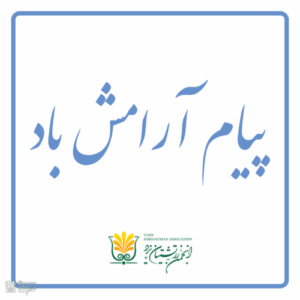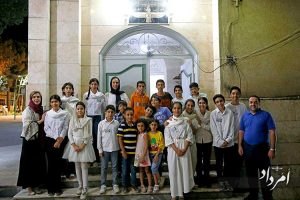Dr. Dariush Akbarzadeh, a prominent researcher of Iranian history and culture, Sassanian linguist and numismatist, has recently published an innovative article in which he revealed the number of pearls in the necklaces of the kings of ancient Iran and their connection with Zoroastrian divine numbers.
This research, which was published in the second issue of 2023 of the International Journal of Humanities, offers a new look at the orderly and meaningful structure of Sassanid necklaces from the period of the first kings, upto Khosrow II. This article focuses on the organized structure of the number of pearl beads in necklaces from 5, 6 upto 9 in the first kings until the period of Khosrow II, and the number of 12 in each strand or 24 in sewn and hanging necklaces, the possible use of each is studied. Focusing on a new analysis and comparing it with previous findings that are mentioned below:
- The five rays on the crown of Bahram I: Unlike previous works, the new article does not evaluate these rays as Mithra symbols.
- The increase in the number of pearls in Shapur I’s necklace has been questioned. Is this increase related to Shapour’s victory and receiving a lot of gold and silver?
- Shoulder strings of pearls: the presence or absence of these strings on the clothes of the minors in front of Bahram II and the queen may refer to gender differences (boys and girls).
- Shapur II’s necklaces: This king’s fixed number of necklaces, one of which contains specific beads based on sacred Zoroastrian numbers and the other eight beads, raised a question about the influence of Buddhism on this art.
- Puran’s dress: The author has evaluated the obvious differences in Puran’s dress and the absence of shoulder straps as a boundary between women’s and men’s art.
- Khosrow II period: This period has been described as the beginning of change and innovation in necklaces, headbands, chest ornaments, and shoulder ornaments, which continued until the end of the Sassanid period.
These findings show the depth of Dr Akbarzadeh’s research and its value in better understanding the history and art of ancient Iran.
Dr Dariush Akbarzadeh’s article titled “Decoding of Zoroastrian divine numbers in Sassanid pearls” and the link with Zoroastrian divine numbers can be found in the following link.
https://ijas.usb.ac.ir/
Volume 13 (2023), issue 2










